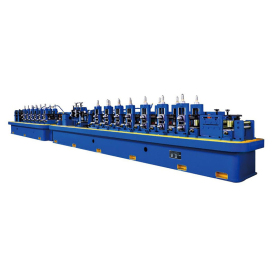[Cold cutting saw machine]An In-Depth Exploration of Cold Cutting Saw Machines: Features, Benefits, and Applications in Modern Manufacturing
****
Cold cutting saw machines, a pivotal advancement in the manufacturing and metalworking industries, have revolutionized how materials are processed. These specialized machines utilize a unique method of cutting that involves very little heat generation, making them ideal for a range of materials, including steel, aluminum, and composites. With a growing emphasis on precision and efficiency in industrial operations, understanding the features, benefits, and applications of cold cutting saw machines becomes essential for manufacturers looking to optimize their production processes.
Features of Cold Cutting Saw Machines
Cold cutting saw machines are designed to deliver exceptional cutting performance with minimal material distortion. One of their key features is the use of high-speed steel (HSS) or carbide-tipped blades, which retain sharpness for longer durations and provide clean cuts. These blades operate at lower speeds compared to traditional saws, significantly reducing the heat generated during the cutting process.
Another distinct feature of cold cutting saws is their ability to achieve a near burr-free finish. The cold cutting process minimizes thermal expansion, avoiding the warping and distortion commonly associated with hotter cutting methods. This leads to a more precise end product, which is crucial for applications requiring tight tolerances.
Moreover, many cold cutting saw machines are equipped with advanced digital controls and sensors that ensure consistent cutting speeds and depths. This technology allows operators to customize their cutting parameters, catering to diverse materials and thicknesses while maintaining quality.
Benefits of Cold Cutting Saw Machines
The benefits of utilizing cold cutting saw machines in manufacturing are substantial. One of the most significant advantages is the reduction in heat-induced stress on the material. By avoiding excessive heat, manufacturers can mitigate the risk of material hardening, which can occur during traditional cutting methods. This attribute is especially important when working with heat-sensitive alloys or high-strength materials that may lose their structural integrity when exposed to high temperatures.

An In-Depth Exploration of Cold Cutting Saw Machines: Features, Benefits, and Applications in Modern Manufacturing
Additionally, cold cutting saws contribute to improved safety in the workplace. The minimal heat generation results in less risk of burns or other heat-related injuries for operators. Furthermore, the precise cutting capabilities reduce the likelihood of accidents related to misalignment or improper cutting angles.
The operational efficiency of cold cutting saw machines is another noteworthy benefit. As these machines generate little to no heat, there is less need for costly coolant systems or extensive cleanup after the cutting process. This translates to reduced maintenance costs and increased uptime for manufacturing operations.
Applications of Cold Cutting Saw Machines

An In-Depth Exploration of Cold Cutting Saw Machines: Features, Benefits, and Applications in Modern Manufacturing
Cold cutting saw machines find applications across a myriad of industries. In the automotive sector, for example, they are employed for precise cutting of various metal components, ensuring that parts fit together perfectly when assembled. The electronics industry also benefits from cold cutting saws, particularly for creating intricate cuts in metal casings and enclosures that house sensitive electronic components.
In the construction industry, these machines are used to cut rebar and other structural elements efficiently and safely. Builders can depend on the precision provided by cold cutting saws to meet the strict specifications often required in building codes.
The aerospace industry utilizes cold cutting saw machines for critical metal components that must be cut with the utmost accuracy. In this sector, the ability to produce a clean, burr-free finish is essential to ensure the safety and reliability of aircraft parts.
Conclusion

An In-Depth Exploration of Cold Cutting Saw Machines: Features, Benefits, and Applications in Modern Manufacturing
Cold cutting saw machines represent a significant leap forward in cutting technology, offering a range of features that enhance performance and safety in industrial settings. Their ability to minimize heat generation, provide precision cuts, and improve operational efficiency make them an invaluable tool in modern manufacturing processes. With diverse applications across multiple industries, cold cutting saw machines are poised to play an increasingly vital role in the evolving landscape of production and metalworking. As manufacturers continue to seek ways to enhance quality and efficiency, embracing cold cutting technology will undoubtedly be an integral part of the solution.Heat-Resistant HSS Blade
